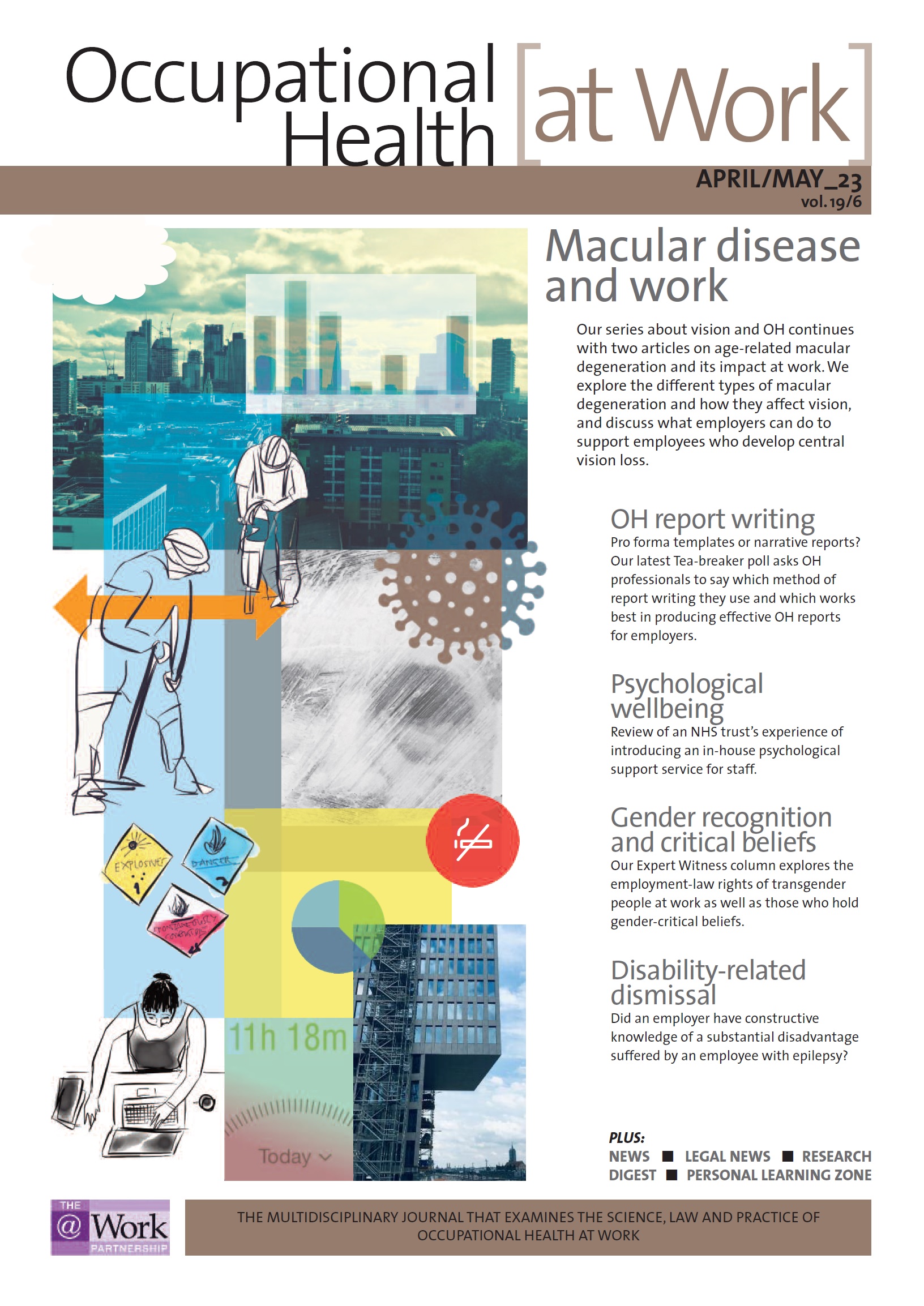April/May 2023 (vol. 19/6)
ContentsFeaturesNewsLegal
NewsResearch DigestResearch PlusCPD
 Macular disease and work: Part 1
Macular disease and work: Part 1
Part 1: clinical features and management
Summary:
Our series on vision and work continues with a two articles on age-related macular degeneration and its impact at work. In this part, Alexander Foss and Chris White explain the different types of macular degeneration and how they affect people’s vision, both in general and at work.
Our vision can be crudely divided into peripheral and central vision. The central vision is the part of the visual field that we have conscious awareness of and serves such tasks as reading, watching television and recognising faces. It is also the part of our vision that sees colour. It is also necessary (but not sufficient by itself) for driving. Our central visual field is only about 4º across, which is approximately the size one’s thumb nail when viewed at arm’s length.
By contrast, our peripheral visual field extends for almost 180º horizontally. This part of our vision is used to detect obstacles and hazards, which is why it is also required for driving…
Alexander Foss is a consultant ophthalmologist and honorary professor at Nottingham University Hospitals NHS Trust. He is the lead clinician for the hospital’s macula service and was a member of the NICE AMD guidelines committee (NG82). His research interest includes various aspects relating to macular degeneration.
Chris White is an eye clinic liaison officer for My Sight Nottinghamshire, based at Nottingham University Hospitals NHS trust. He has many years’ experience working with patients with a visual impairment where he has specialised in counselling, mental health, low-vision therapy and accessible technology solutions.
Author: Foss A, White C
Occupational Health at Work April/May 2023 (vol. 19/6) pp19-22



